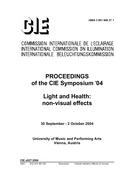Description
Smart lighting systems are based on sensors and tunable lighting systems are increasingly more prevalent, but collecting, analysing, and using the large data generated by these sensors are challenging. Inspired by research on evolutionary algorithms, it can be hypothesized that an adaptive lighting system can operate in real-time by adjusting its output through a decision-making algorithm based on data mining techniques. Such an adaptive lighting system requires two-order input from users; initial and continual. Initial conditions provide training to the system through human factors research investigating the interaction between humans and their environment. Continual conditions are provided by data collected through sensors in real-time, and they continuously feed into the decision-making algorithm to adjust the output to meet occupants biological and psychological needs. Research indicates that artificial intelligence techniques, such as evolutionary algorithms, can emerge as good candidates for this framework.
Product Details
- Published:
- 09/29/2021
- Number of Pages:
- 6
- File Size:
- 1 file , 900 KB
- Note:
- This product is unavailable in Belarus, Russia, Ukraine




